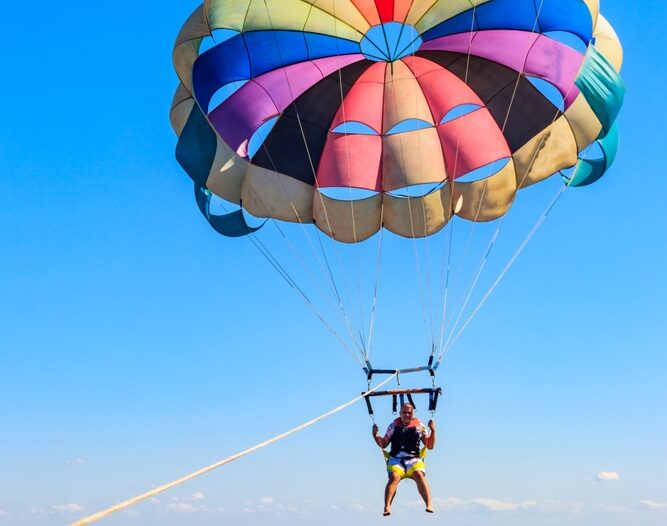
Unintentional drowning is a leading cause of death and serious injury in the U.S. Every day, another 10 people die in drowning accidents. While many of these tragedies occur in home swimming pools, public pools and those open to members can pose hazards as well. Unsafe pool conditions, lack of warning signs, and inadequate pool supervision can all contribute to deadly drowning accidents in Fort Lauderdale. If your recent day at a hotel or public swimming pool ended in catastrophe, contact a seasoned Fort Lauderdale pool accident attorney for sound legal counsel.
Reasons Behind Drowning Incidents
Swimmers in public pools assume they are safe for adults and even children, depending on the environment. Hotel swimming pools often have plenty of signage with safety rules, emergency life-saving equipment, and lifeguards on duty. Public pools must adhere to strict safety standards to prevent harms such as slip and falls and accidental drowning. It can be easy for parents to assume their children are safe while playing in a public pool. Unfortunately, not every establishment takes its duties seriously. Common factors involved in drowning incidents are as follows:
- Lack of adult supervision
- No lifeguard on duty
- No emergency equipment nearby
- Lack of warning signs
- Dangerous diving conditions
- Slippery pool decks
- Poorly maintained pools
- Dangerous drains
- Overcrowded pools
Almost all drowning incidents are preventable. It is up to the hotel or other establishment to keep the swimming pool and surrounding area safe for guests and visitors. Failure to prevent or eliminate the above-mentioned hazards, resulting in swimmer injury or death, is negligence in the eyes of the law. In Fort Lauderdale, injured swimmers or surviving family members of a drowning victim can sue the hotel or pool owner in these situations.
Find a Fort Lauderdale Pool Accidents Lawyer Near Me
(954) 476-1000Pool Owner Liability
Fort Lauderdale is a popular destination for swimming enthusiasts. With plenty of beaches, waterways, and public swimming pools, it’s easy to beat the heat in the “Venice of America.” Anywhere that invites people to swim – either with implied or expressed consent – must take steps to ensure the safety of the swimming area. Florida law obligates pool owners to repair known risks, search for unknown ones, and warn visitors of non-obvious hazards, such as a pool that’s too shallow for diving. Falling short of these expectations can place liability with the property owner for subsequent drowning incidents.
Hotels and other public places with pools even owe duties of care to trespassers if they are minor children. This means pool owners must install barricades, fencing, or locked doors to prevent curious children from accidentally falling into the pool and drowning. Lack of safety measures to prevent trespassing children may be negligence if the property owner knew or reasonably should have known of this risk. A family-friendly hotel, for example, should have measures in place to make it impossible for children to wander down into the pool unsupervised.
Accidental drowning can lead to brain damage, coma, and death. Don’t let someone else’s negligence go without legal consequences – especially if it led to catastrophic injury or wrongful death.
Chalik & Chalik Pool Accidents Lawyer Near Me
(954) 476-10002017 Swimming Pool Accident Statistics
At the Law Offices of Chalik & Chalik, we know that statistics don’t paint the full picture. It’s impossible for a number to represent the real human being behind the tragedy. Yet, we also recognize that there is power in numbers. We keep track of how many lives swimming pool accidents ruin and end each year and spread awareness of the very real risks of drowning. We sincerely hope that by sharing the following statistics, we help someone avoid a catastrophe:
- Over a 10-year period, an average of 3,536 people died from unintentional drowning each year in the United States. An additional 332 people died annually from drowning after a boating accident.
- One in five people who fatally drown are children under the age of 14. For every child who dies from unintentional drowning, five other children go to the hospital for nonfatal submersion injuries.
- Children between one and four have the highest chances of drowning. In 2014, one-third of children who passed away from unintentional injuries died from drowning. Drowning is the main cause of death among this age group (other than birth defects).
- Drowning remains the second-leading cause of injury death in children ages one to 14 (behind car accidents). Lack of swimming ability, pool barriers, and child supervision contribute to these deaths each year.
- In just the few short months, from Memorial Day to Labor Day in 2017, 163 children under the age of 15 died in swimming pool or spa accidents. Almost 70% (112) of the victims were four and younger.
- In the same summer mentioned in the previous statistic, Florida recorded the highest number of drownings involving children. Twenty-five children in Florida drowned from Memorial Day through Labor Day in 2017. California and Texas were second-highest states, each with 14 child drowning incidents.
We don’t put these numbers here to scare you. We include them so that you can see you’re not alone as the victim of a swimming pool accident. Too many people have discovered the consequences of negligent pool owners, inadequate barriers, and lack of adult supervision. If you’re one of them, don’t hesitate to get in touch with us. We’ll discuss your rights and options during a free consultation in Fort Lauderdale.
Click to contact Chalik & Chalik's Pool Accidents Lawyer today
Florida Leads the Nation in Child Drowning Accidents
Florida has led the nation in the number of annual child drownings several years in a row. In 2013, Florida had the highest unintentional drowning rate for children one to four at 7.54 incidents per 100,000 population. In 2016, Florida and Texas tied for the number of drowning deaths in children zero to 14, with 40 fatalities each. This was significantly more than the second-highest state, California, with 29 child drowning deaths. The latest statistics show that in 2017, Florida was once again at the top of the list for child drowning accidents with 51 deaths.
According to data from the Florida Department of Health, 20 children under the age of 17 died in drowning incidents in Miami-Dade County from 2012 to 2014. Eighty-eight additional children had to go to the hospital for nonfatal drowning. Swimming pools accounted for the highest number (66%) of fatal and nonfatal drownings. About 71% of pool drownings in the area were children ages one to four. Male children in Miami-Dade are more than twice as likely to die from drowning than females.
Studies show that taking swimming lessons can reduce the risk of drowning death in children ages one to four. In addition, wearing a life jacket could cut the number of boating accident deaths in half. Keep your family safe this summer and year-round in swimming pools and other bodies of water by staying educated, aware, and vigilant of the risks. Contact us to learn more about a swimming pool accident case.
Call or text Chalik & Chalik
(954) 476-1000


